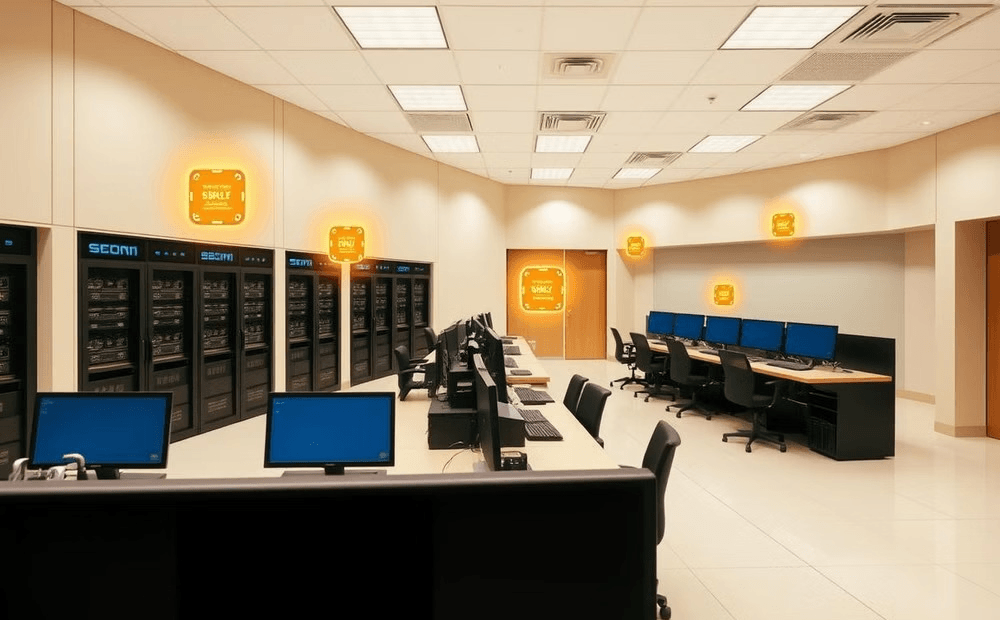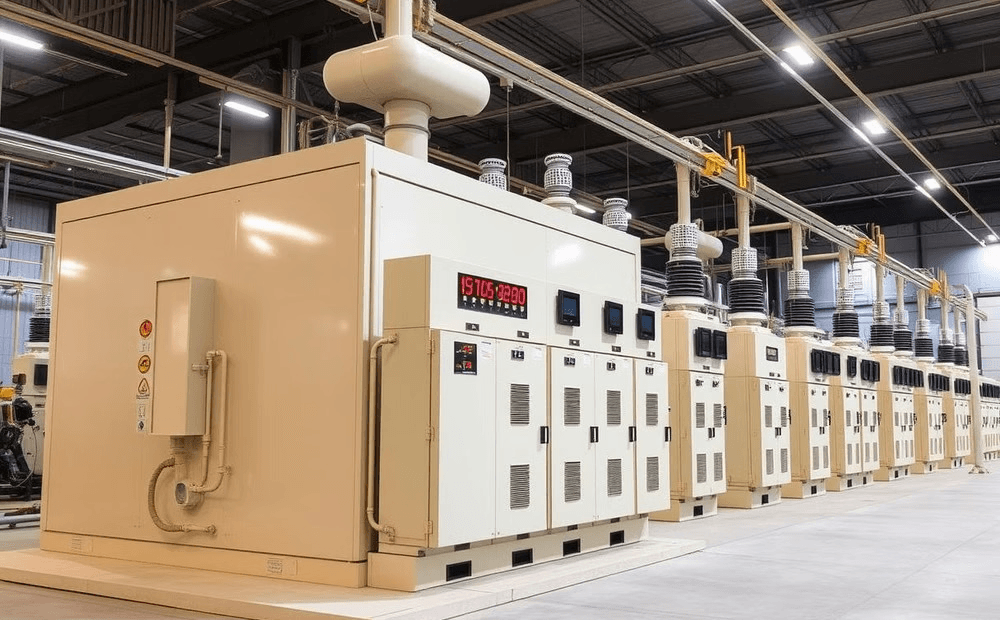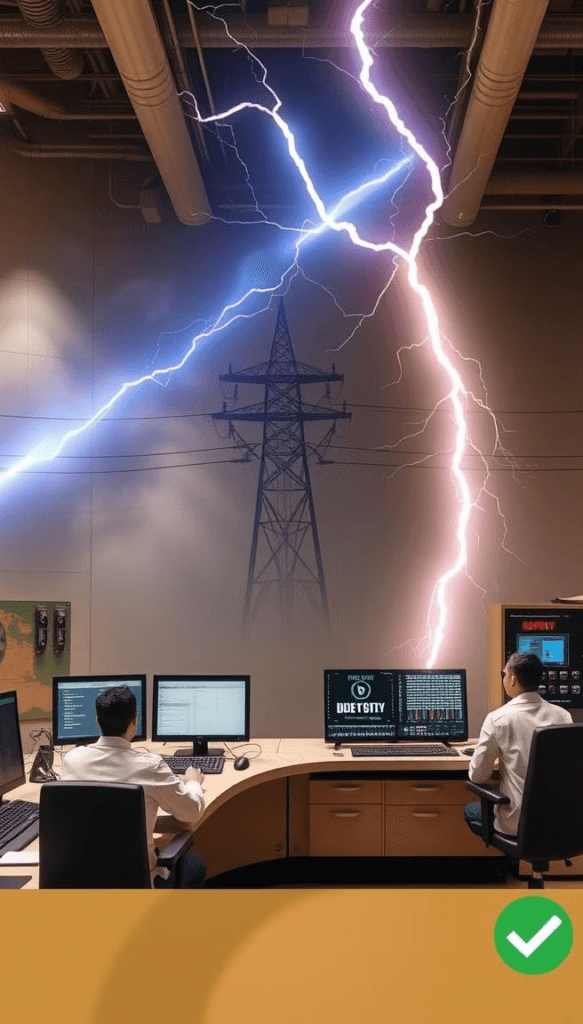Surge Protection for Energy & Power Operations
Surge protection is critical in the energy and power industry, which relies heavily on electronic equipment. Protecting this equipment from unexpected surges is essential for ensuring continuous operations. From power generation to distribution and control, maintaining uninterrupted power is vital for reliability and safety.
Understanding Surge Protection Devices (SPDs)
What are SPDs? Surge protection devices (SPDs) are specialized electrical components designed to safeguard sensitive equipment from transient overvoltages, which are sudden and disruptive increases in voltage that can occur in electrical systems.
Impact of Overvoltages Transient overvoltages can cause significant damage to electronic equipment, leading to malfunctions, component failure, and even fires. SPDs provide a path for diverting these surges to the ground, protecting valuable assets.

Types of Surge Protection Devices
Type 1 SPD
Type 1 SPDs are the first line of defense against severe transient
overvoltages. They are typically installed at the point of entry of the
electrical system, protecting against lightning strikes and other high-energy events.
Type 2 SPD
Type 2 SPDs provide secondary protection against moderate
overvoltages, operating in conjunction with Type 1 SPDs. They are often located closer to sensitive equipment to offer a further layer of protection.
Type 3 SPD
Type 3 SPDs are designed to provide the final level of protection for sensitive equipment. They are typically installed at the point of use. directly protecting individual devices from low-energy overvoltages.
Critical Areas Needing Surge Protection
Power Generation Rooms
Protect generators, transformers, and other critical equipment from surges to prevent damage and downtime.
Control Rooms
Protect control systems, monitoring devices, and communication equipment for safe and efficient operations.
Substations
Protects voltage transformation and distribution equipment from external surges.
Distribution Control Rooms
Essential for managing electricity flow to consumers; requires reliable surge protection for control systems.

Consequences of Neglecting Surge Protection
Equipment Damage
Surges can damage electronic equipment, leading to costly repairs or replacements.
Operational Downtime
Equipment failure disrupts operations, impacting productivity and causing financial losses.
Safety Hazards
Electrical surges pose safety risks to personnel, potentially causing fires or explosions.
Recommended SPD Specifications
Control Room

Control rooms house sensitive equipment like servers and computers, which are vulnerable to data loss and system downtime. Type 2 SPDs are recommended for these areas, protecting against moderate overvoltages. The recommended specifications include a continuous operating voltage (Uc) of 230V, a voltage protection level (Up) of 400V, a nominal discharge current (In) of 20 kA, and an impulse current capacity (Iimp) of 100 kA.
Power Generation Room
Power generation rooms contain essential equipment like generators and transformers that are susceptible to damage and fire hazards caused by surges. Type 1 SPDs are crucial for this environment, offering the highest level of protection against severe transient overvoltages. The recommended specifications include a Uc of 400V, an Up of 690V, an In of 50kA, and an Iimp of 250kA.

Substation

Substations are crucial for voltage transformation and distribution, and their equipment, including switchgear and relays, requires protection from external surges. Type 2 SPDs are recommended to ensure system stability and prevent equipment failures. The suggested specifications include a Uc of 11kV, an Up of 20kV, an In of 10kA, and an Iimp of 50kA.
Enhancing Operational Continuity with SPDs
- Protection from Surges
- Minimize damage and ensure operational continuity.
- Reduced Maintenance Costs
- Lower maintenance and repair costs, leading to significant savings.
- Enhanced Safety and Compliance
- Mitigate electrical hazards and ensure compliance with industry regulations.
- Improved Reliability
- Minimize disruptions and downtime, enhancing power supply reliability.
The Importance of Standards and Compliance
Assess Risk
Identify potential surge sources and assess risks to critical equipment.
Select SPDs
Choose the appropriate types and specifications based on risk assessment.
Install SPDs
Position SPDs strategically within the electrical system for optimal protection.
Test and Maintain
Regularly test and maintain SPDs for continued effectiveness and reliability.

Prioritizing Surge Protection for Optimal Operations
- Increased Efficiency
- Minimize downtime, ensuring consistent operations.
- Improved Reliability
- Protect critical equipment, preventing failures.
- Cost Savings
- Reduce repair costs and enhance long-term value
Q&A Session: Open Discussion

Ask your questions:
Open the floor for questions on surge protection.
Clarify concerns:
Discuss implementation strategies and potential challenges.
Share insights:
Gain knowledge and best practices for your facilities.

